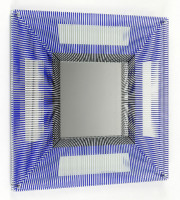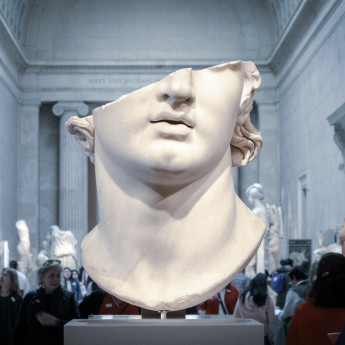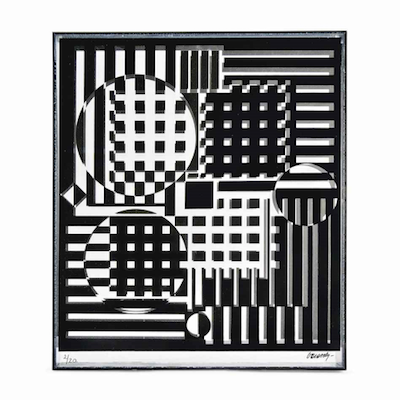
Details
Artist
Styles
wood, steel and serigraph; signed in pencil at the back // Vibration 9 petits et 4 grands cercles by Antonio Asis is a 2010 mixed media piece that explores optical illusions and spatial dynamics. Composed of wood, steel, and serigraph, this sculpture features a grid-like pattern overlaying variously sized circles, creating a sense of depth and movement. The precision of the black and white lines interacts with the circular shapes, making the circles appear to vibrate or shift as the viewer moves around the piece. Asis's work engages with kinetic art and op art principles, inviting viewers to experience the shifting forms and illusions created by the interplay of line, shape, and perspective.
Vibration 9 petits et 4 grands cercles, 2010
form
Medium
Size
52 x 52 X 13 cm
- Inches
- Centimeters
Edition
Price
- USD
- EUR
- GBP
Details
Artist
Styles
wood, steel and serigraph; signed in pencil at the back // Vibration 9 petits et 4 grands cercles by Antonio Asis is a 2010 mixed media piece that explores optical illusions and spatial dynamics. Composed of wood, steel, and serigraph, this sculpture features a grid-like pattern overlaying variously sized circles, creating a sense of depth and movement. The precision of the black and white lines interacts with the circular shapes, making the circles appear to vibrate or shift as the viewer moves around the piece. Asis's work engages with kinetic art and op art principles, inviting viewers to experience the shifting forms and illusions created by the interplay of line, shape, and perspective.
- Recently Added
- Price (low-high )
- Price (high-low )
- Year (low-high )
- Year (high-low )
Antonio Asis
Vibration Bandes Noir, Bleu Et Turquoise, 2010
Sculpture / Object
Mixed Media
EUR 3,000
What is Op Art?
Op Art is a visual art style that uses optical illusions to create the impression of movement, vibrating patterns, flashing, or hidden images. The works are typically abstract, with many well-known pieces in black and white. The roots of Op Art can be traced back to earlier movements like Futurism, Constructivism, Dada, and Neo-Impressionism, particularly in their use of color effects and graphic design.
































